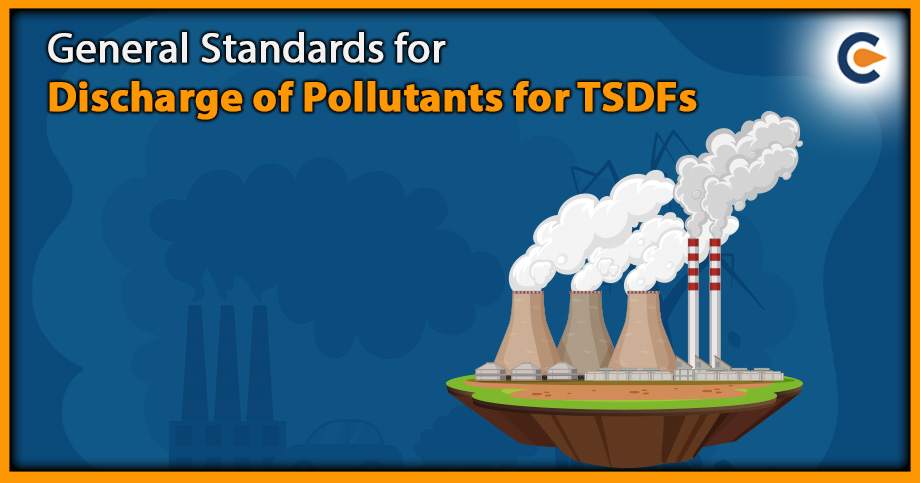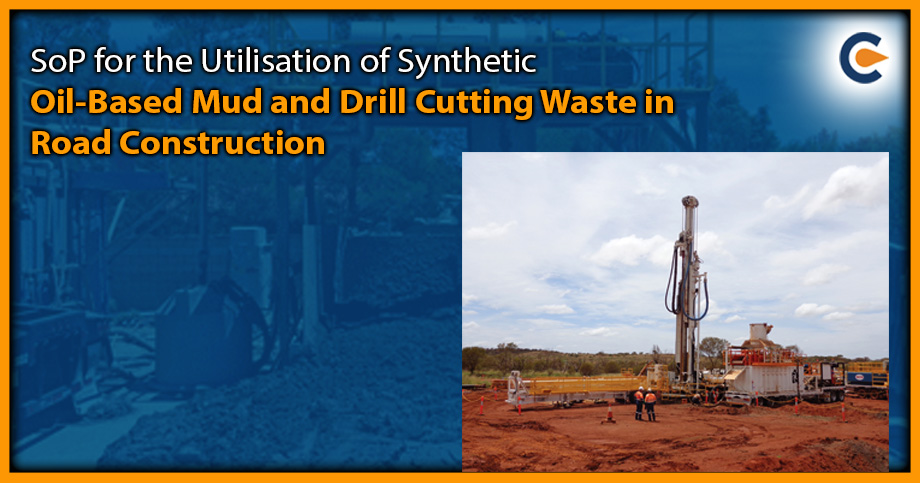TSDF stands for Treatment, Storage, and Disposal Facility, which is a specialized facility designed to manage and dispose of hazardous wastes in an environmentally sound manner. The Standards for Discharge of Pollutants for TSDFs are more stringent than those for other industries due to the nature of handling the waste. The Central Pollution Control Board (CPCB) has developed specific guidelines for TSDFs to ensure that hazardous waste is treated and disposed of safely and environmentally soundly.The CPCB has developed a set of general standards for the discharge of environmental pollutants, which vary depending on the pollutant type and the discharge’s nature.
The CPCB has established specific guidelines for TSDFs[1], which include limits on pH, total dissolved solids, suspended solids, oil and grease, biochemical oxygen demand, chemical oxygen demand, total coliform bacteria, and other parameters such as total cyanide, total chromium, total lead, total nickel, and total zinc. In addition, there are limits on particulate matter, sulphur dioxide, nitrogen dioxide, hydrochloric acid, and hydrogen fluoride emissions into the air.
Standards for Discharge of Pollutants for TSDFs
The Standards for Discharge of Pollutants for TSDFs as per CPCB are as follows:
|
Sl. No. |
Parameter |
Standards |
||||
|
|
|
Inland surface water |
Public sewers |
Land of irrigation |
Marine / coastal areas |
|
|
1. |
Colour and odour |
Every possible effort should be made to remove colour and unpleasant odour as far as practicable. |
— |
Every possible effort should be made to remove colour and unpleasant odour as far as practicable. |
Every possible effort should be made to remove colour and unpleasant odour as far as practicable. |
|
|
2. |
Suspended solids (mg/l), max. |
100 |
600 |
200 |
a.
b. |
For the process, wastewater 100 and cooling water effluent 10% above the total suspended matter of influent. |
|
3. |
The particle size of suspended solids |
shall pass 850 microns |
— |
|
a.
b. |
The Floatable solids, solids (max. 3 mm.) The Setleable solids, (maximum 856 microns) |
|
4. |
pH value |
5.5 to 9.0 |
5.5 to 9.0 |
5.5 to 9.0 |
5.5 to 9.0 |
|
|
5. |
The temperature |
shall not exceed 5oC in respect to the receiving water temperature. |
— |
— |
Shall not exceed 5oC in respect of the receiving water temperature. |
|
|
6. |
Oil & grease, mg / l max. |
10 |
20 |
10 |
20 |
|
|
7. |
The total residual chlorine (Cl-), (mg/l) max |
1.0 |
— |
— |
1.0 |
|
|
8. |
Ammonical nitrogen (as N), mg/l, max. |
50 |
50 |
— |
50 |
|
|
9. |
Total nitrogen (as N); mg/l, max. |
100 |
— |
— |
100 |
|
|
10. |
Free ammonia (as NH3), mg/l, max |
5.0 |
— |
— |
5.0 |
|
|
11. |
Biochemical oxygen demand (3 days at 27oC), mg/l, max. |
30 |
350 |
100 |
100 |
|
|
12. |
Chemical oxygen demand, mg/l, max |
250 |
— |
— |
250 |
|
|
13. |
Arsenic (as As) mg/l, max |
0.2 |
0.2 |
0.2 |
0.2 |
|
|
14. |
Mercury (As Hg), mg/l, max. |
0.01 |
0.01 |
— |
0.01 |
|
|
15. |
Lead (as Pb) mg/l, max. |
0.1 |
0.1 |
— |
2.0 |
|
|
16. |
Cadmium (as Cd) mg/l, max. |
2.0 |
1.0 |
— |
2.0 |
|
|
17. |
Hexavalent chromium (as Cr + 6), mg/l, max. |
0.1 |
2.0 |
— |
1.0 |
|
|
18. |
Total chromium (as Cr) mg/l, max. |
2.0 |
2.0 |
— |
2.0 |
|
|
19. |
Copper (as Cu) mg/l, max. |
3.0 |
3.0 |
— |
30 |
|
|
20. |
Zinc (as Zn) mg/l, max. |
5.0 |
15 |
— |
15 |
|
|
21. |
Selenium (as Se) mg/l, max. |
0.05 |
0.05 |
— |
0.05 |
|
|
22. |
Nickel (as Ni) mg/l, max. |
3.0 |
3.0 |
— |
50 |
|
|
23. |
Cyanide (as CN) mg/l, max. |
0.2 |
2.0 |
0.2 |
0.2 |
|
|
24. |
Fluoride (as F) mg/l, max. |
2.0 |
15 |
— |
15 |
|
|
25. |
Dissolved phosphates (as P), mg/l, max. |
5.0 |
— |
— |
— |
|
|
26. |
Sulphide (as S) mg/l, max. |
2.0 |
— |
— |
5.0 |
|
|
27. |
Phenolic compounds (as C6H5OH) mg/l, max. |
1.0 |
5.0 |
— |
5.0 |
|
|
Radioactive materials |
||||||
|
28. |
Alpha emitters micro cure mg/l, max. |
10-7 |
10-7 |
10-8 |
10-7 |
|
|
29. |
Beta emitters micro cure, mg/l, max. |
10-6 |
10-6 |
10-7 |
10-6 |
|
|
30. |
Bio-assay test |
90% survival of fish after 96 hours in 100% effluent |
90% survival of fish after 96 hours in 100% effluent |
90% survival of fish after 96 hours in 100% effluent |
90% sunfival of fish after 96 hours in 100% effluent. |
|
|
31. |
Manganese (as Mn) |
2 mg/l |
2 mg/l |
2 mg/l |
2 mg/l |
|
|
32. |
Iron (as Fe) |
3 mg/l |
3 mg/l |
3 mg/l |
3 mg/l |
|
|
33. |
Vanadium (as V) |
0.2 mg/l |
0.2 mg/l |
— |
0.2 mg/l |
|
|
34. |
Nitrate Nitrogen |
10 mg/l |
— |
— |
20 mg/l |
|
Conclusion
The Standards for the Discharge of Pollutants for TSDFs are more stringent than those for other industries due to the hazardous nature of the waste being handled. These standards are designed to ensure that hazardous waste is treated and disposed of safely and environmentally soundly, thereby minimizing the risk of contamination to the environment and public health. Facilities handling and managing this kind of waste not only require Hazardous waste management authorisation and Environmental Clearance but also pollution NOC from Pollution Board. Therefore, proper approvals from agencies must be ensured with the assistance of experts so that the proponent doesn’t loses time and resources while starting any such facility.











